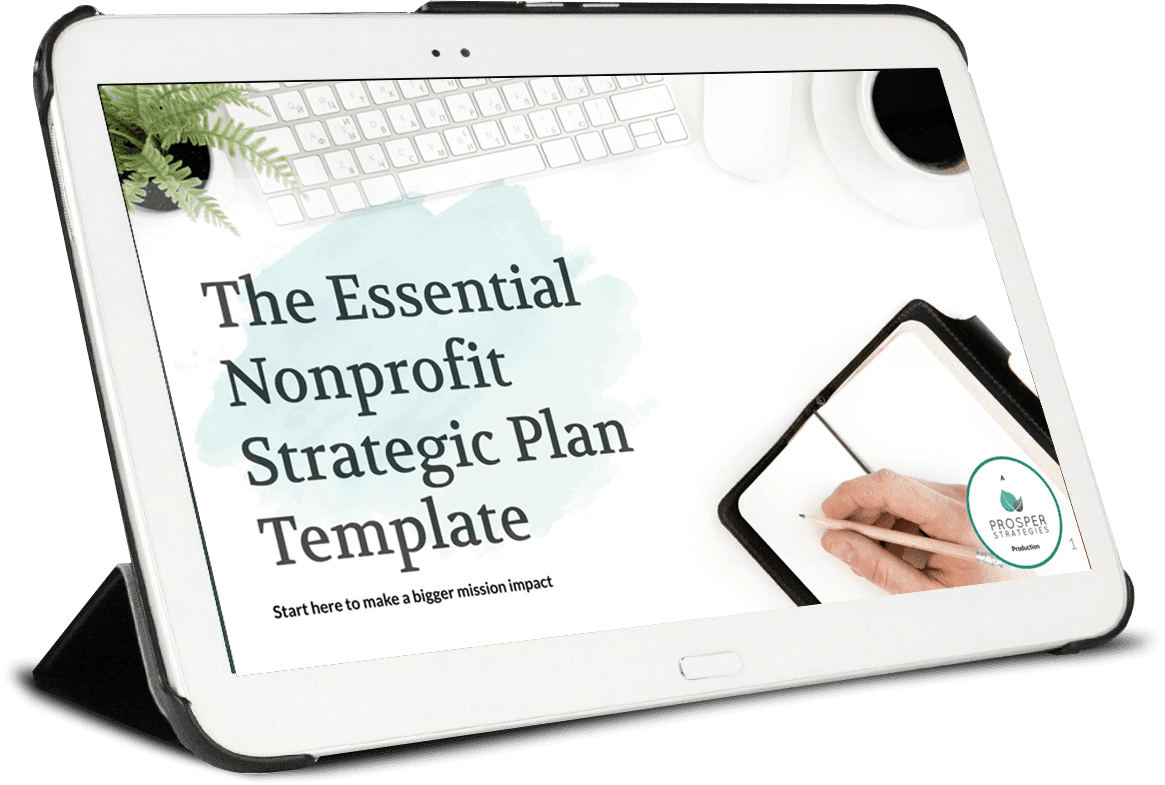Change is a constant for every nonprofit. If you weren’t convinced of that before, I’m sure you are now, after the year we’ve had. The thing that distinguishes extraordinary nonprofits from ordinary ones is how they react to it.
If you’re working on implementing any aspect of The Nonprofit Strategy System, from strengthening your brand to instituting a new process for managing your strategic plan, managing change will be a necessary part of the process. While some organizations embrace the transformation that comes about as they implement the System, others resist it. Most organizations, however, fall somewhere in the middle of this spectrum. They recognize the need for change and want to make adjustments, but some or all of their team members have trouble letting go of old ways of working, thinking, and behaving. That’s normal. Here’s how to address it so you can get on with your transformation.
DON’T Force It
As a leader, you are approaching change from a position of power. You have the ability to fire, demote or stifle the career of an employee who doesn’t accept change, and you can hold those powers over people as a way to force them to change their behavior. While employees might respond to this sort of change management tactic initially, it will do nothing to build their morale or improve their engagement and retention. Forcing change should be avoided except in cases where it’s absolutely necessary – where your employees’ safety, your beneficiaries’ wellbeing or your organization’s immediate survival depends on it.
[bctt tweet=”Forcing change should be avoided except in cases where it’s absolutely necessary – where your employees’ safety, your beneficiaries’ wellbeing or your organization’s immediate survival depends on it.” username=”ProsperStrat”]DO Start a Dialogue
Instead of forcing change on your employees with little explanation or reasoning, try opening up a dialogue about what you’d like to change and why. Draw distinctions between an old way of operating and a new way that you are exploring, and ask for feedback and reactions before putting new policies or approaches in place. If possible, get feedback from not just your staff, but also the people and communities you serve. The more you can show that a change is likely to benefit them, and therefore your mission, the more likely you will be to get employees on board. Additionally, the more involved your employees feel in decision-making, the better they will likely respond to new approaches.
[bctt tweet=”Instead of forcing change on your employees with little explanation or reasoning, try opening up a dialogue about what you’d like to change and why.” username=”ProsperStrat”]DON’T Fold in the Face of Resistance
Change can breed anxiety within organizations, and anxiety can breed resistance. Teams are especially likely to resist change when it causes them discomfort, threatens their own positions of authority or job security, appears that it will make their job harder, or worst of all, seems illogical or unnecessary.
Many leaders are tempted to fold in the face of this resistance, especially when it becomes more widespread than an employee or two, but backing down from a truly worthwhile and logical change once you’ve begun implementing it is the worst thing you can do. It makes it even harder for employees to take other changes seriously in the future and begins to portray the image of an organization that is disorganized or lacking clarity at the leadership level.
Stay the course when you face resistance from employees, and focus your efforts on getting people on board rather than walking back your plans. To do this, you might consider identifying people from within each department, function or level of your organization and positioning them as change spokespeople within your organization. Often, these change spokespeople can come out of a Project Taskforce, a group we suggest developing to guide and champion most of the work in the Nonprofit Strategy System. These change spokespeople will ideally be well-versed in the problem you’re trying to address, and the change you’re looking to implement. The people in their departments or at their level may trust their guidance through change more than they trust leadership.
DO Accept Experimentation
Change is messy. Rarely does an organization implement a change related to The Nonprofit Strategy System (or any other change, for that matter) without some missteps and failures. If you know that going into a time of transformation and communicate it to your team, you can treat changes as measured risk-taking and experiment until you achieve the outcomes you desire.
DO Evaluate Changes After they Happen
Don’t just make a change and move on without looking back. Instead, figure out how you’re going to evaluate the success of a change before you begin implementing it, and set a timeline for going back and doing that evaluation. This practice will help you see if a change you’ve implemented is actually addressing the problem you hoped it would and help you learn how to make more effective moves in the future.
What sorts of change is your organization going through right now? What are your biggest challenges when it comes to managing this change? Tell us in the comments.
Is Your Nonprofit Doing All it Can to Advance its Mission?

